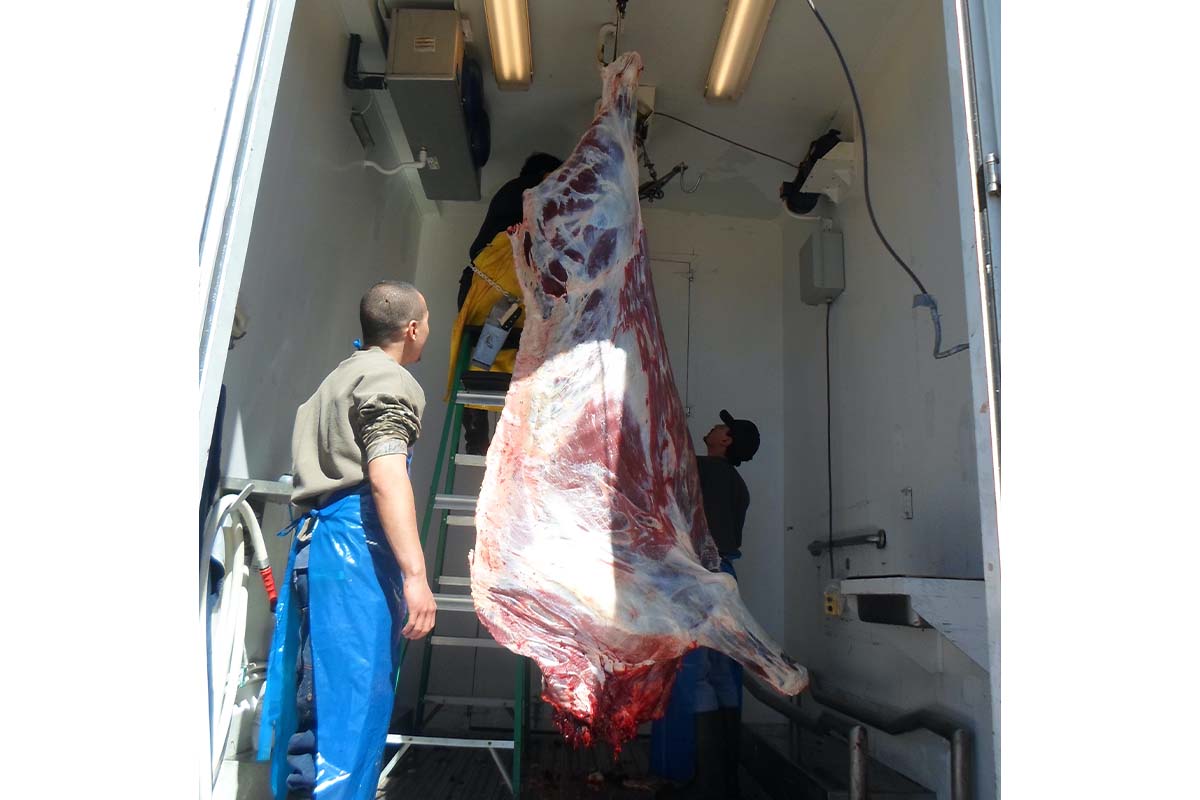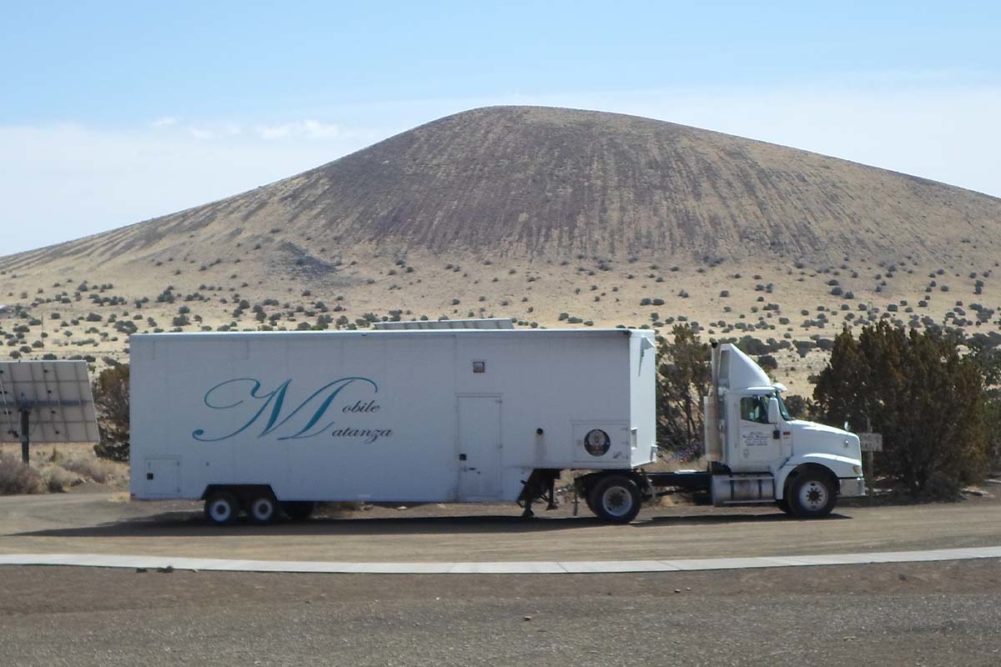In the community of Taos, NM, there has been a many-year problem with small livestock producers earning little financial rewards for raising their animals. The Taos County Economic Development Corp. (TCEDC) believes it has a solution in the works that could be operational by this fall.
Mercedes Rodriguez, the executive director of the TCEDC, said the entity has received grants that will help in building and operating a modular designed slaughter and processing plant on Taos city-owned land adjacent to the Taos Regional Airport. The new facility will operate under the name TCEDC Matanza.
“This project has been years in the thought and design process and as a 501(c)3 non-profit organization we believe that we are rockin’ and rollin’ our way to put our area livestock producers and ranchers on the road to profitability,” Rodriguez said.
“We were also very fortunate in acquiring a very knowledgeable and experienced individual with hands-on skills who’s assisted with the planning phase and will be the operations manager for the plant.”
Rodriguez is referring to Lucas Salazar, a small plant owner in Colorado who is familiar with mobile slaughtering, further processing and marketing. Salazar has 14 years of experience in this field and is the owner of a small plant (Salazar Meats) in Manassa, Colo. He indicates his family is buying his processing facility and that he will be working full-time on the new project in Taos. He also shared the vision of why this new facility is needed.
“I’ve seen so many small ranchers who make no profit for their efforts in raising a few animals. They sell them to a local auction operation and have little or no return on their investment and labor. Compounding the problem is the fact that their children leave ranching and go elsewhere to earn a paycheck. We think this project could change that trend.”
Planning for success
The basic infrastructure of the new facility will include a 50-carcass hanging cooler, cut and wrap unit, a mobile slaughter truck with a capacity for eight carcasses, a drip cooler, a stationary kill floor with four bays, a storage freezer unit and a corral system that can hold up to 50 animals. The facility is expected to use up to 150 gallons of water per animal.
Projections from the TCEDC are for the plant to process up to 25 beef animals a week the first year and work with six employees, including management. It is estimated the project will cost about $3 million.
The facility will be a joint venture of the town of Taos, Taos County and the TCEDC.
In addition, an older mobile slaughter unit owned by the TCEDC that used to harvest livestock at ranch sites will also be utilized. It is a smaller unit that handles up to eight carcasses and can bring them to a small further processing facility located in the TCEDC administrative building.
It is estimated that employment at the facility could eventually reach 25 workers and processing levels could reach 50 animals per week.
USDA inspection is being applied that could allow local ranchers working with the facility to sell their meats locally to stores, restaurants and perhaps schools, making the entire Northern New Mexico community more self-sufficient.
The facility would likely have slaughter inspection one day a week although it could process other animals on a custom basis, for use by the owners, their families or guests of their households, on other days of the week. Salazar said he prefers that all livestock processed be under USDA inspection.
“I’ve played that game before where there are issues with keeping custom and inspected carcasses and meat separate,” he said. “That’s too much of a headache and I feel all animals should be processed under inspection.”
He added that having ranchers’ meats inspected would add value to them, and they could profit from many different cuts.
 Mobile slaughtering is one specialty service offered by Salazar Meats. (Source: Taos County Economic Development Corp.)
Mobile slaughtering is one specialty service offered by Salazar Meats. (Source: Taos County Economic Development Corp.)Overcoming hurdles
Much of the initial planning effort was slowed when some area protestors circulated petitions to halt the project, portraying visions of 18-wheelers crowding out neighborhoods, odor issues and excessive water use claims.
Rodriguez said her organization used listening sessions to hear concerns and address each issue. She notes that some of the original objectors have now come around to support the project and have even offered suggestions to assist in the planning.
Salazar said that cattle would likely be the bulk of the animals processed.
“There are more cattle ranchers than anything else, although we also have some hog producers and there are bison raised in the area,” he said. “We also have yak being raised. But getting back to cattle, we will need to get those ranchers who can bring in anywhere from eight to 10 or 20 animals to sustain a volume that leads to efficiency. That will be our bread and butter.”
He predicted that the service area for TCEDC Matanza will stretch out to 100 or 150 miles, and he plans on bringing one or two of his employees from his Colorado plant into the new operation.
Salazar also said that after ranchers realize they won’t be forced to sell their animals at auction and pay a commission for having the animal sold, they are much more likely to get those cattle to the 1,000-lb weight range. With the option to sell them to the new operation, they will be able to avoid paying commissions and be assured that they can offer them higher prices because the meats will be inspected and have a greater value.
He indicated that he will be encouraging ranchers to plan to bring their cattle to that weight prior to the opening of the facility.
Taos has a population of about 6,500 and the population of Taos County is near 35,000. Salazar said that the modular plant concept would allow expansion into further processing of meats or other species like bison or yak through adding on units to the initial two 50-feet long modules that will be in place upon opening.
There are still some wastewater handling and utility systems to be installed before opening, in addition to obtaining USDA approval for inspection, but both Rodriguez and Salazar feel the TCEDC Matanza will promote more production of locally raised meats and be a successful and sustainable enterprise.



